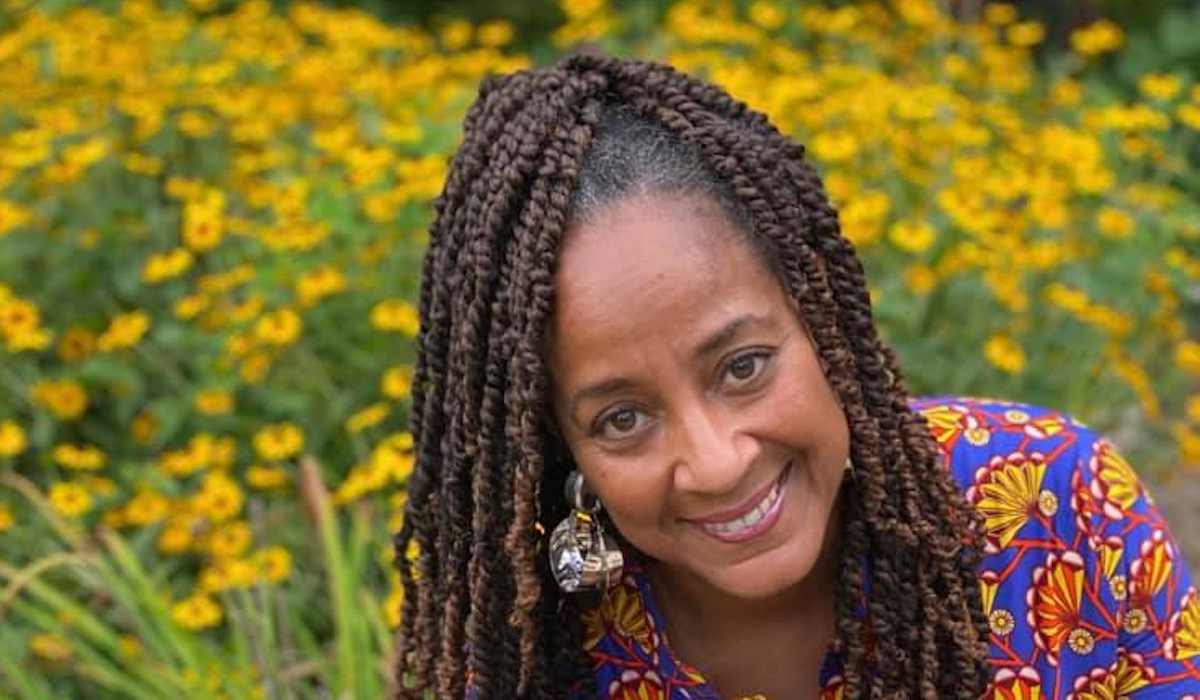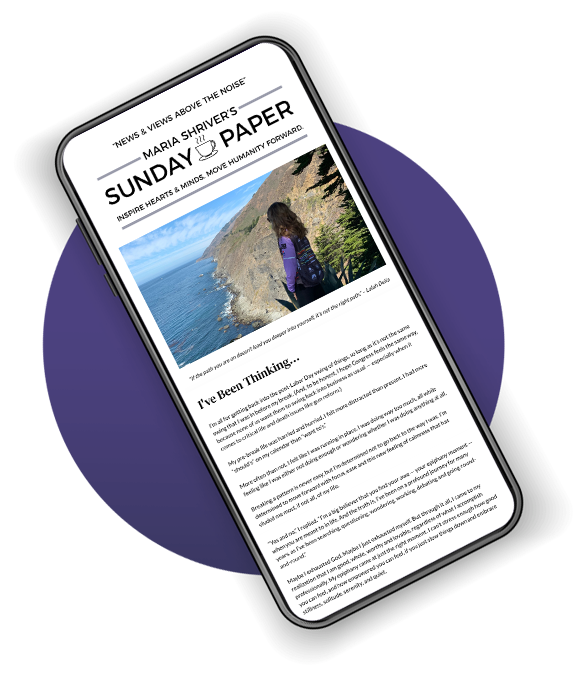Have-To versus Want-To

I showed up at my psychiatrist’s office—the inner sanctum, if you will—and dropped like lead onto the sofa, sighing deeply. My sighs were not sarcastic—sighs had become my words. You know how Romans 8:26 says that the Holy Spirit interprets even our moans and our groans? My sighs were too deep for words. I hoped God was getting my message.
The sunlight shone on the terraced porch outside Dr. Shayna Lee’s windows. The office was a cottage in the Third Ward area of Houston. It was soothing, quaint, and homey yet functional. It had charts showing the brain—the flow of the nervous system—and personal mementos that made me realize that outside of her work, she too had a life. Somehow that was comforting.
There in the waiting room was a cross section of Houston: people like me who perhaps never expected to be living with a mental health crisis, an old-school grandmother training her grandkids to “behave in this office,” someone who was dropped off in a cab, someone else who arrived in a flashy sports car.
There we were—all needing some relief from our mental woes. I had the sense that Dr. Lee, a black female psychiatrist, understood where we all came from.
She stepped into the room and with a warm smile said, “Mrs. Rasmus, good to see you again,” as though we were old friends. I guess that beat being old enemies.
She asked about the medication I was taking that she had prescribed. After I reported that I didn’t seem to feel any better with the medication, she said what she undoubtedly said a hundred times or more each week: “The medication has to get into your system. It’s a one-day-at-a-time process. It will take time—typically six weeks, sometimes sooner, sometimes a little later. But remember: this crisis that you are coming back from has been occurring unreported within your system for a while. Be patient with yourself as we move through this process together.”
I sighed again deeply. I knew she’d heard me.
After we discussed the medication, she asked about Rudy and the girls—how they seemed to be coping with my depression. When I called it a nervous breakdown, she quickly informed me that the term ‘nervous breakdown’ could not be found in the Diagnostic and Statistical Manual. Rather, I was diagnosed with a major depressive episode.
I was too depleted to say, “Whoopee! So, it’s not called a nervous breakdown?” The sigh that followed could be interpreted as sarcasm.
Maybe correcting the medical terminology was her way of dispelling some of the myths I had about nervous breakdowns and crazy women doing crazy things and being locked up. Actually, I was perfectly fine with the term. I had heard it used in hushed tones by my grandmother or my parents as a little girl. It didn’t frighten me, really. While I was indeed sick, I wasn’t callous or emotionally abusive, as best as I could tell. Some things only become clear over time, but I have tried to be a good mom. But after the crash I felt like a zombie, void of any emotions.
I can only imagine what people feel like who have lost their memory. How disorienting it must be to awaken with no knowledge of who you are, who you’ve loved, or who has loved you. In the same way I was surrounded by those I loved while feeling totally empty of all feeling. I felt like a character in a Madame Tussauds Wax Museum—in the right place with the right costume and props but lifeless, as though my soul had been evacuated. I couldn’t feel the joy I once felt when Rudy, the girls, and I would laugh and talk after church or the sense of belonging I had known as a wife and mother.
Return to Childhood
Dr. Lee asked, “Mrs. Rasmus, what is it that you really want to do? What do you want?” She gave me space to answer. Thinking about her question, I felt as though I had lost something but had no idea what it was. Was this what going insane was like? I couldn’t recall the last time anyone besides a waiter in a restaurant asked what I wanted. I felt panicked. I needed to find this thing that I knew must be hidden in the house of my mind somewhere. Was it buried under a to-do list? Everything in me wanted to scream, “Somebody help! I’ve lost my want-to!”
In the midst of my flurry of internal searching, Dr. Lee softly said, “I believe that as you move through this recovery, it is going to be important for you to answer that question.” I nodded, and we concluded the fifteen-minute check-in.
I drove myself home in a blur. Once in the house, I sat in my favorite chair, stared out of the living room window, and asked God, “How do I find out what I want?” I heard God say, “Go back to your childhood.”
Madear’s Porch
In the days that followed, I reflected on my childhood. What did I want as a child? What were my dreams and desires? What did I enjoy imagining?
After a while I remembered how I loved climbing the steps of my grandmother’s front porch. She had a porch that should have had large carved lions on each side of the steps like the houses rich white folks had. It was great. I would climb what I called the seats where her lions should have been resting to protect her palace and then jump off into my Superwoman stance. Oh, how I loved to do that! Remembering it almost brought a smile to my face, though my lips weren’t cooperating.
When I wasn’t climbing those majestic steps, I was climbing her chinaberry tree. How she would lovingly scold me, her firstborn grandchild, “Juanita, stop climbing in that tree before you fall and break your neck!” I don’t remember anything about climbing that tree that felt dangerous in the least. I loved that tree and the freedom I felt as I conquered it. Reflecting on my childhood allowed me to remember that I used to say, “When I get big, I’m going to go skydiving.” I don’t recall seeing skydivers as a child, although my parents often tried to expose my sister and me to all sorts of new experiences so we wouldn’t limit our world based on what we experienced in a segregated Houston. While I don’t remember where I got that idea, I remember saying it out loud a couple of times to some grown folks, probably in an effort to be validated. Instead, I was laughed at and told, “Girl, where you get that idea from? Black folks don’t do nothing crazy like that!”
So often this kind of “we don’t do this” thinking was simply a mechanism for minimizing the hurt that was just steps beyond the front door when we left the imagined safety of our homes as black men and women in the 1960s. I understood it, but that didn’t stop the desire in my heart for adventure beyond the limits others perceived for me.
The Want-To File
Days after my visit to Dr. Lee, I thought about the want-tos of my life and decided to start a want-to file. I chose pretty pictures that I ripped out of magazines, junk mail, and the sort. I also tore out words that arrested my attention and placed them in the file. Anything that caught my eye: a couple in a hot-air balloon, the poster of a movie I wanted to see, enchanting garden scenes, encouraging words or phrases. I especially appreciated the positive energy from O, The Oprah Magazine.
While reading was still a chore mentally, I found such life in the vibrant colors of the words and pictures. Even some of Oprah’s favorite things were life-giving to look at. My want-to file had become a kind of vision board even though I didn’t realize it at the time.
Scripture says that without a vision the people perish. I felt as dead as I could imagine, minus the tombstone and the dirt. I had to believe there would be a resurrection out of that terrible pit. Somehow, my want-to file seemed to give me hope.
Adapted from Learning to Be by Juanita Campbell Rasmus. Copyright (c) 2020 by Juanita Campbell Rasmus. Published by InterVarsity Press, Downers Grove, IL.
This excerpt was featured in the December 6, 2020 edition of The Sunday Paper. The Sunday Paper publishes News and Views that Rise Above the Noise and Inspires Hearts and Minds. To get The Sunday Paper delivered to your inbox each Sunday morning for free, click here to subscribe.


